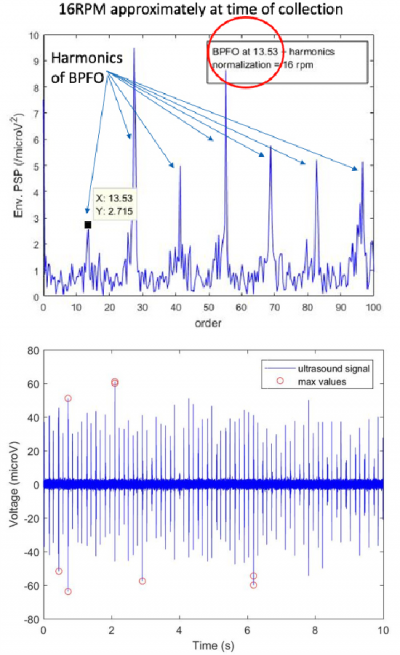Maintenance of wind turbines
Wind turbines are complex installations with both slow and fast moving components. There are specific technical and safety challenges for condition monitoring technicians.
One of these challenges is the height at which data must be collected. The height of wind turbines is rarely less than 80m. This creates significant accessibility, safety and logistical constraints, particularly in the delivery of spare parts. Heavy, expensive machinery and trained operators are required, sometimes for several days of downtime.
Planning these interventions weeks or months in advance is the best way to minimise the extra costs, or even to mitigate them completely.
The major technical challenge is caused by the different rotational speeds of the different components of a wind turbine. Vibration analysis works well for monitoring fast rotating components, such as the generator bearings. On the other hand, vibration analysis is not useful for slowly rotating components because these bearings rotate much more slowly and do not create enough vibration to make diagnosis impossible. Vibration analysis is futile and unnecessary. In order to monitor slowly rotating components, condition monitoring technicians must use ultrasonic technology.
Accessibility
When working at extreme heights, employee safety must be considered. This is especially true for technicians working on wind turbines without a lift. Technicians who climb ladders of 50 to 100 metres, sometimes several times in one day, carrying equipment must learn to manage their time and fatigue.
A continuous condition monitoring solution for wind turbines, which transmits data to a wind farm's maintenance headquarters, reduces the need for regular access to the top of the turbines and improves the overall efficiency of the maintenance and reliability department's operations.

Warning of critical component failure
When critical components inside the nacelle fail, maintenance crews must act quickly to restore turbine operation.
The D-I-P-F curve is a common model describing typical plant life. As shown in the following diagram, ultrasound detects imminent and potential failures earlier than vibration, infrared or any other condition monitoring technology, allowing planning and scheduling with the largest window of opportunity for corrective repair.
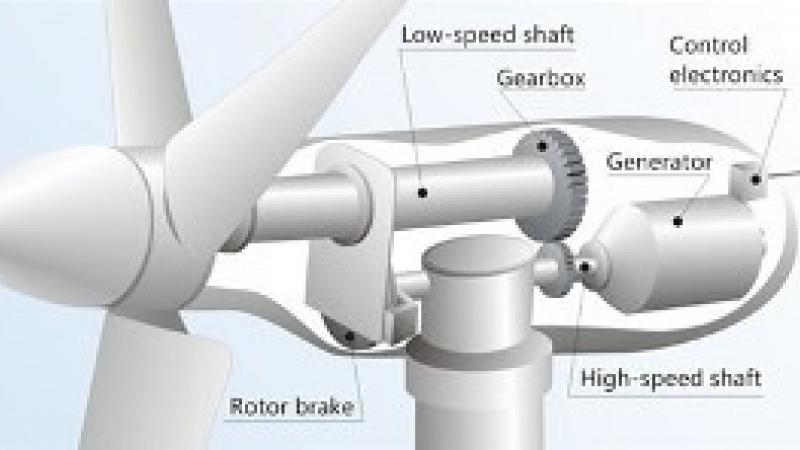
Inside the nacelle
The choice of appropriate condition monitoring technology allows maintenance and reliability technicians to detect faults earlier before the point of no return is reached. The critical elements to be closely monitored are known. The main bearing connects the wind turbine blades to the rest of the mechanism. The main shaft of the wind turbine makes about 10 to 20 rotations per minute, depending on the wind speed. The gearbox of the wind turbine, the driving end and the non-driving end of the generator rotate much faster than the main shaft at low speeds.
Feedback from experience
A permanent monitoring system capable of collecting and analysing ultrasound and vibrations simultaneously and continuously on 8 channels has been installed in the nacelle of a wind turbine. The data collected is processed by the on-board software and analysed in real time, remotely via 3G cellular network. Reliability teams are constantly informed of the health of their remote and critical equipment. Complex analysis tools normally reserved for expensive, high-end vibration software are easily accessible to analysts of all skill levels. The on-board application simplifies the implementation, just log in with your favourite browser and start analysing or trending!
Vibration analysis was already used to continuously monitor critical turbine components. The ultrasonic solution was deployed to monitor seven key data collection points. One collection point was on the main slow speed bearing, four on the gearbox, one on the driving end and one on the non-driving end of the turbine generator.
The ultrasound monitors the main slow speed bearing of the wind turbine, which rotates 91 times slower than the bearings of the main generator. Sensitive to very low energy micro-sonic changes caused by friction and impact, the ultrasound provides an early warning of impending failure. The correlation between ultrasonic and vibration signals allows for more detailed analysis and more accurate diagnosis.
The installation of such a system is fast. Within a few hours, the condition monitoring data of the wind turbines is delivered to the analysts.
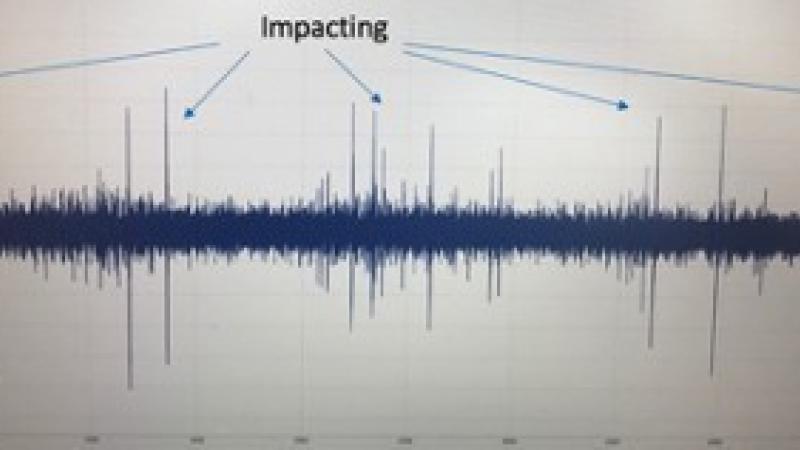
Analysis
Planetary bearing - As expected from the initial vibration data, the ultrasonic reading confirmed the presence of an impact.
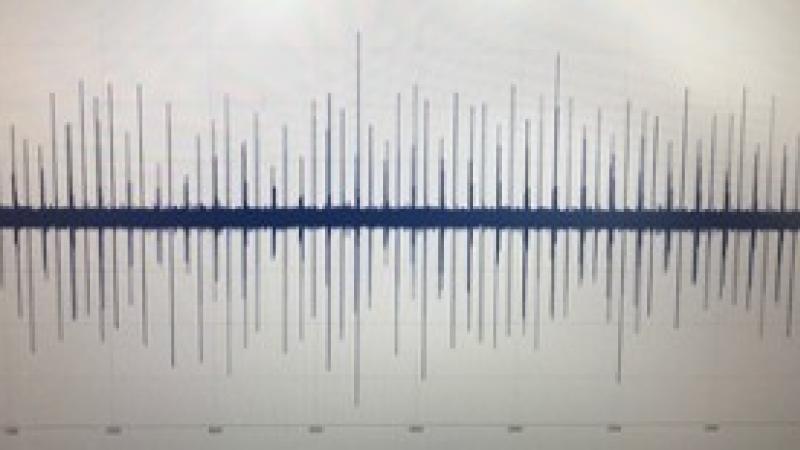
Main bearing at slow speed - The initial ultrasonic reading of the main bearing revealed numerous impacts. A top-up of lubricant clearly reduced (-10dBµV after grease injection) the friction and impacts, as shown in the figure below.
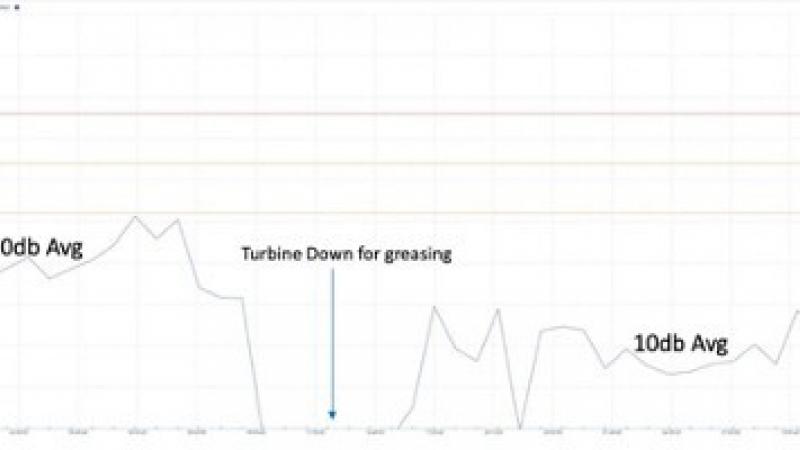
Main bearing characteristics at low speed, before and after lubrication.
Further analysis was carried out on the main bearing. Repetitive impacts were found at a BPFO of approximately 13.5 times the operating speed, which is consistent with an outer ring defect. It was recommended that the condition of the main bearing be closely monitored. The defect will eventually lead to the replacement of this bearing.
Thanks to the collection of this new data, the technicians were able to confirm a suspected defect in the planetary bearing that had originally been detected by a vibration analysis.
In addition, they discovered a new fault on the main bearing that had not been detected by the existing vibration sensors. After applying grease to the main bearing, the technicians noticed a significant drop in friction levels. In the future, they will continue to monitor the main bearing closely.
By André Degraeve, Vice President of BEMAS & Managing Director of SDT Ultrasound Solutions


